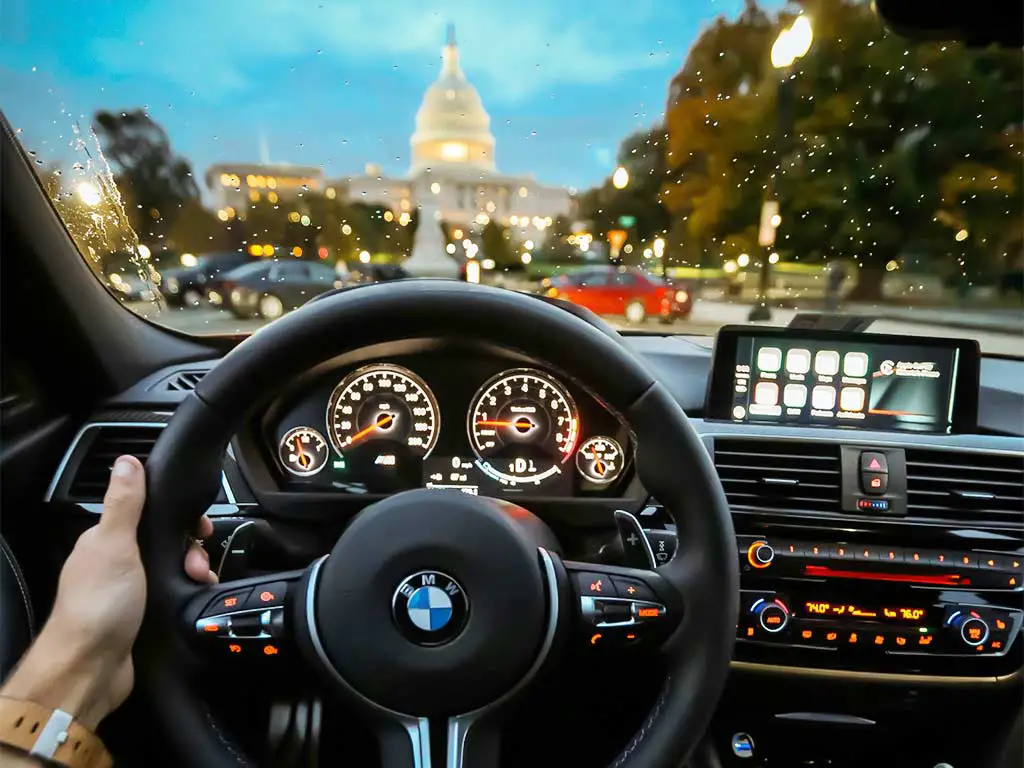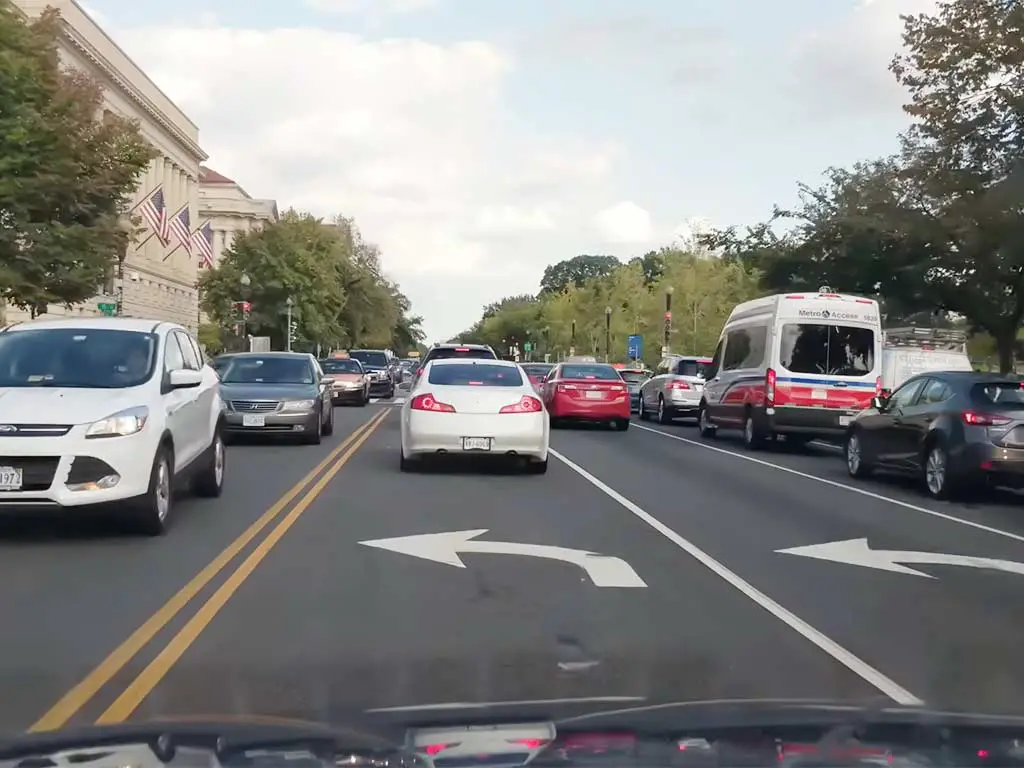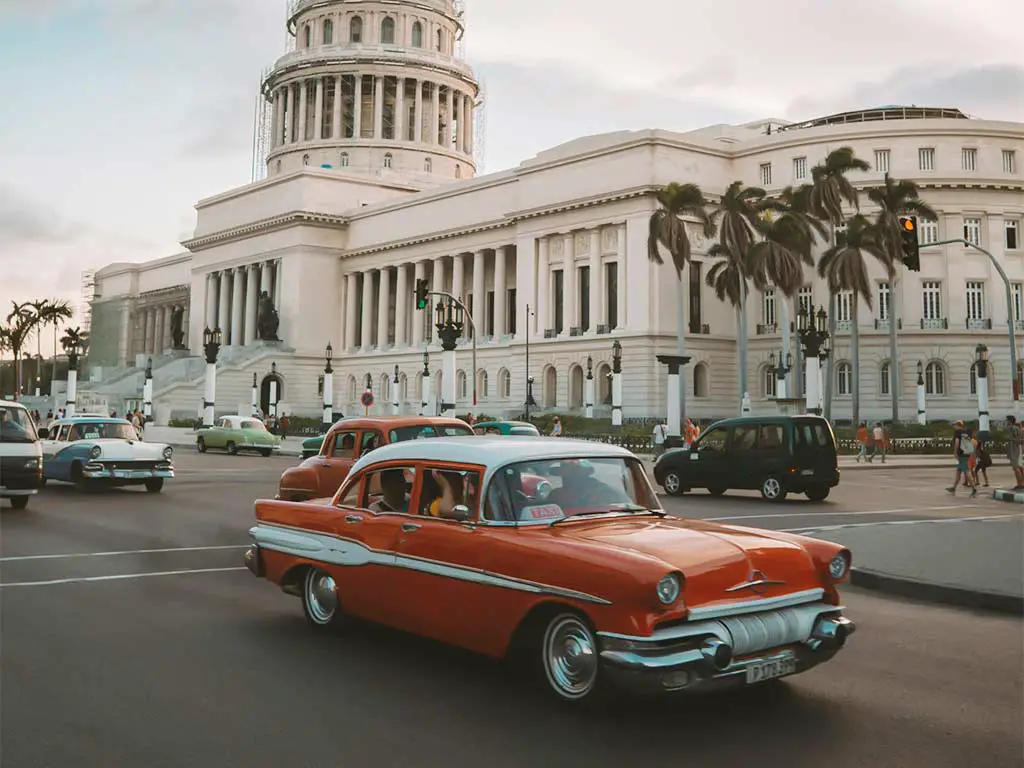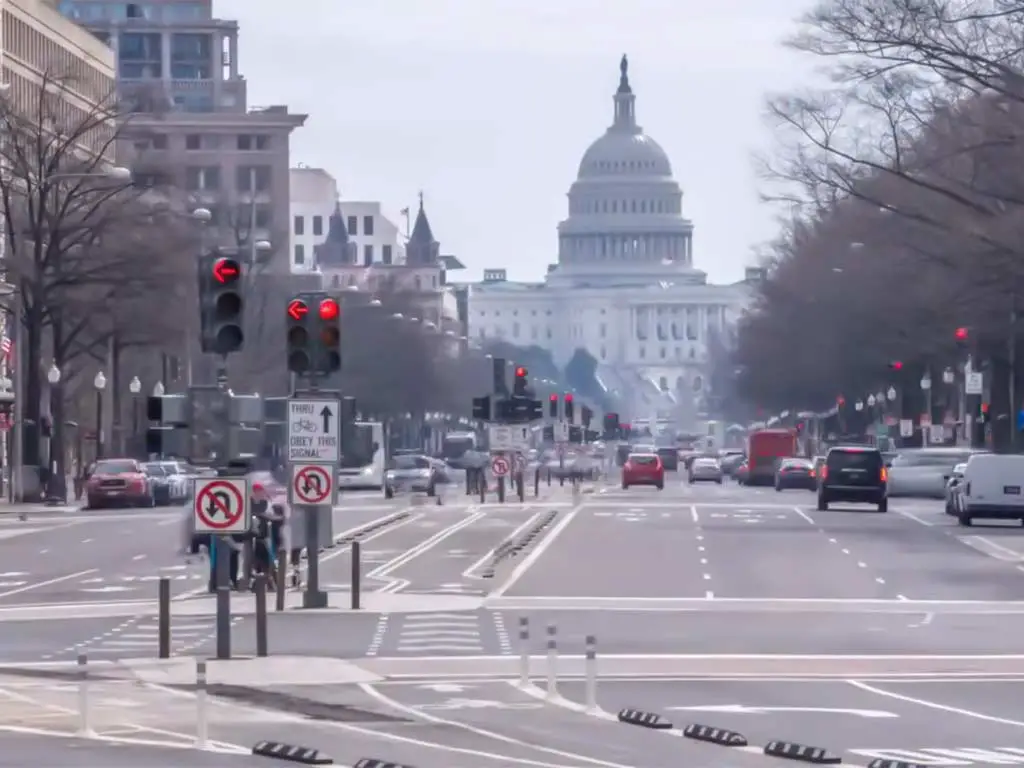Wondering how to navigate the complexities of driving in Washington D.C.? Whether you’re a resident or a visitor, driving in the nation’s capital can be daunting due to its unique road layout, heavy traffic, and strict regulations.
However, with the right strategies, you can ensure a smoother and more enjoyable driving experience.
From planning your route and avoiding rush hours to utilizing navigation apps and being mindful of parking challenges, there are several tips to make your journey less stressful.
Additionally, staying alert for pedestrians and cyclists and adapting to seasonal weather conditions are crucial for safe driving.
This guide provides practical advice to help you tackle D.C.’s roads with confidence and ease, ensuring that your time behind the wheel is as smooth as possible. So, stay focused.
Unique Road System of Washington DC

Washington D.C.’s road system is a distinctive blend of radial avenues and a grid layout, designed by Pierre Charles L’Enfant in 1791.
The city’s streets are arranged in a grid pattern with diagonal avenues named after U.S. states, creating traffic circles and squares at their intersections.
Numbered streets run north-south, while lettered streets run east-west, with the Capitol building serving as the central point.
This design creates numerous traffic circles and squares, intended to facilitate movement and enhance the city’s aesthetics.
The layout also includes quadrants (NW, NE, SW, SE) centered on the Capitol, which helps in navigation but can be confusing for newcomers.
This unique combination of grids and diagonals is both historically significant and practically distinctive.
Traffic Patterns and Rush Hours in Washington DC

Washington D.C., known for its significant political and historical importance, also experiences complex and intense traffic patterns, particularly during rush hours.
Several factors contribute to these patterns, making commuting in the nation’s capital a notable challenge.
Morning Rush Hour
Peak Time: 6:30 AM – 9:30 AM
Morning rush hour in Washington D.C. typically starts around 6:30 AM and can extend until 9:30 AM. During this time, roads leading into the city from suburban areas like Maryland and Northern Virginia are particularly congested.
Key routes include I-66, I-395, and the George Washington Parkway, where heavy inbound traffic converges as workers head towards federal buildings, corporate offices, and other workplaces.
Evening Rush Hour
Peak Time: 3:30 PM – 7:00 PM
Evening rush hour usually begins around 3:30 PM and lasts until 7:00 PM. Outbound traffic on major highways such as I-495 (the Capital Beltway), I-95, and US Route 50 experiences significant slowdowns as commuters return to suburban areas.
The congestion can be exacerbated by events, weather conditions, or incidents on the roadways.
Key Congestion Points – Bridges and Tunnels
Bridges like the Theodore Roosevelt Bridge, the Woodrow Wilson Bridge, and the 14th Street Bridge are major congestion points.
Tunnels such as the Third Street Tunnel also see heavy traffic, as they serve as primary routes for crossing the Potomac and Anacostia Rivers and accessing central D.C.
Public Transportation Strain – Metro System
The Washington Metro, while a popular alternative, also faces overcrowding during rush hours.
Key lines like the Red, Orange, and Blue lines are particularly strained, with delays and full trains being common. This adds to the overall commuting stress in the region.
Impact of Federal Government Schedules
The schedules of federal government employees heavily influence traffic patterns.
Federal holidays, early dismissals, or delayed openings can significantly alter the usual flow, often providing temporary relief or, conversely, creating unexpected congestion.
Adaptive Measures – HOV Lanes and Telework
High-occupancy vehicle (HOV) lanes are used to manage traffic flow, encouraging carpooling and reducing the number of vehicles on the road.
Additionally, the increasing adoption of telework, especially post-pandemic, has had a noticeable impact on reducing rush hour traffic, although its full effect varies.
Washington D.C.’s traffic patterns are characterized by intense rush hours, key congestion points, and a reliance on both road and public transportation systems.
While measures like HOV lanes and teleworking provide some relief, the complexity of the region’s traffic requires ongoing management and adaptation.
Driving in Washington DC: Things to Consider

Driving in Washington D.C. can be a challenging experience due to its unique road system, heavy traffic, and the presence of numerous pedestrians and cyclists.
Understanding the intricacies of navigating the city can help make the experience smoother and less stressful. Here are key considerations for driving in the nation’s capital.
Complex Road Layout
Washington D.C.’s road system is a combination of a grid pattern intersected by diagonal avenues, which creates numerous traffic circles and squares. This layout, designed by Pierre Charles L’Enfant, can be confusing for drivers unfamiliar with the city.
Key intersections like Dupont Circle, Thomas Circle, and Washington Circle can be particularly challenging due to multiple converging roads and the presence of both local and through traffic.
Heavy Traffic and Rush Hours
Traffic congestion is a significant issue in Washington D.C., especially during rush hours. Morning rush hour typically runs from 6:30 AM to 9:30 AM, while the evening rush hour extends from 3:30 PM to 7:00 PM.
During these times, major routes into and out of the city, such as I-66, I-395, and the Capital Beltway (I-495), experience heavy traffic. Planning travel outside these peak times can help avoid the worst congestion.
Parking Challenges
Parking in Washington D.C. can be difficult to find and expensive. Street parking is limited and often restricted to residents or specific hours. Metered parking is available but can be costly and time-limited.
Parking garages are an option, but rates can be high, especially in downtown areas and near popular attractions. Utilizing apps to find and reserve parking spots in advance can save time and reduce stress.
Traffic Enforcement and Fines
Washington D.C. has strict traffic enforcement with numerous speed and red-light cameras throughout the city.
Speed limits are generally lower than in surrounding areas, often 25-30 mph in residential areas and 15-20 mph in school zones.
Fines for traffic violations can be substantial, so it’s important to adhere to posted speed limits and traffic signals.
Additionally, right turns on red are prohibited at many intersections, and there are numerous pedestrian crosswalks where vehicles must yield.
Navigation and GPS Usage
Using a GPS or navigation app is essential for driving in D.C., especially for those unfamiliar with the area.
However, it’s important to stay alert and not rely solely on technology, as construction, road closures, and temporary restrictions can change frequently.
Additionally, some navigation apps may not always account for the complexities of D.C.’s road system, such as the presence of one-way streets and traffic circles.
Public Transportation and Alternative Routes
Given the traffic congestion and parking difficulties, considering public transportation for part of the journey can be beneficial.
The Washington Metro system is extensive and can be a convenient alternative for avoiding traffic. Park-and-ride facilities are available at many Metro stations outside the city.
Alternatively, using ride-sharing services or taxis can help navigate particularly congested areas without the stress of driving and parking.
Safety Considerations
Washington D.C. is a city with a high volume of pedestrians and cyclists. Many streets have designated bike lanes, and pedestrian crosswalks are frequent.
Drivers must be vigilant and yield to pedestrians at crosswalks and be aware of cyclists sharing the road.
Distracted driving can lead to accidents, so it’s crucial to stay focused and cautious, particularly in busy downtown areas and near tourist attractions.
Seasonal and Weather Impacts
Weather conditions can significantly impact driving in D.C. Snow and ice in winter can make roads treacherous, and the city’s response to snow removal can be slower compared to other northern cities.
Summer brings increased tourist traffic and potentially heavy rain, leading to slick roads and reduced visibility.
Drivers should adjust their driving style to the weather conditions, allowing extra time for travel and maintaining safe following distances.
Driving in Washington D.C. requires an understanding of its unique road system, an awareness of heavy traffic and parking challenges, and a consideration for strict traffic enforcement and the safety of pedestrians and cyclists.
By planning ahead, utilizing navigation tools effectively, and being mindful of seasonal and weather-related impacts, drivers can navigate the city more efficiently and safely.
Pro Tips for Driving in Washington DC

Driving in Washington D.C. can be a daunting task due to its unique road layout, heavy traffic, and strict traffic regulations. However, with some strategic planning and awareness, you can navigate the city more effectively and safely.
Here are some pro tips to help you drive in Washington D.C.
Plan Your Route in Advance
Before setting out, plan your route using a reliable GPS or navigation app. Take note of major intersections, traffic circles, and one-way streets.
Washington D.C.’s radial and grid system can be confusing, so familiarize yourself with the general layout of the city, particularly the quadrants (NW, NE, SW, SE) centered around the Capitol.
This will help you avoid getting lost and make navigating unfamiliar areas less stressful.
Avoid Rush Hour Traffic
Washington D.C. experiences significant traffic congestion during rush hours. Morning rush hour typically lasts from 6:30 AM to 9:30 AM, and evening rush hour from 3:30 PM to 7:00 PM. If possible, plan your trips outside these peak times.
If you must travel during rush hour, allow extra time to reach your destination and consider alternative routes that may be less congested.
Utilize Navigation Apps Wisely
Navigation apps like Google Maps and Waze can provide real-time traffic updates, road closures, and alternative routes.
However, stay alert and do not rely solely on these apps. D.C.’s road conditions can change quickly due to construction, events, or security measures. Keep an eye on road signs and be prepared to adapt your route as needed.
Be Aware of Traffic Enforcement
Washington D.C. has strict traffic enforcement, with numerous speed and red-light cameras throughout the city.
Speed limits are often lower than in surrounding areas, typically 25-30 mph in residential areas and 15-20 mph in school zones.
Fines for violations can be substantial, so adhere to posted speed limits and traffic signals. Additionally, many intersections prohibit right turns on red, so pay attention to signage.
Parking Strategies
Finding parking in D.C. can be challenging and expensive. Street parking is limited and often has restrictions, such as resident-only zones or time limits. Use parking apps to locate and reserve parking spots in advance.
Parking garages are available but can be costly, especially in downtown areas. Consider parking outside the city center and using public transportation or ride-sharing services to reach your final destination.
Stay Alert for Pedestrians and Cyclists
Washington D.C. is a city with a high volume of pedestrians and cyclists. Many streets have designated bike lanes, and pedestrian crosswalks are frequent.
Always yield to pedestrians at crosswalks and be mindful of cyclists, especially when turning or changing lanes. Distracted driving can lead to accidents, so stay focused and avoid using your phone while driving.
Adapt to Seasonal Conditions
Weather conditions can significantly impact driving in D.C. Winter weather, including snow and ice, can make roads treacherous, and the city’s response to snow removal can be slower than in northern cities.
In summer, heavy rain can lead to slick roads and reduced visibility. Adjust your driving style to the weather conditions, allow extra travel time, and maintain a safe following distance.
Use Public Transportation When Possible
Given the traffic congestion and parking difficulties, consider using public transportation for part or all of your journey. The Washington Metro system is extensive and can be a convenient alternative to driving.
Park-and-ride facilities at Metro stations outside the city can make this option more viable. Additionally, ride-sharing services can help you avoid the stress of driving and parking in particularly congested areas.
Driving in Washington D.C. requires careful planning, vigilance, and adaptability.
By planning your route, avoiding peak traffic times, using navigation tools wisely, and being aware of traffic regulations, you can navigate the city more efficiently.
Wrapping Up
Navigating Washington D.C.’s roads can be challenging, but with the right strategies, it becomes manageable. Planning your route in advance and avoiding rush hours can save time and reduce stress.
Utilizing navigation apps for real-time updates and adhering to traffic regulations helps in avoiding fines and maintaining safety.
Parking can be difficult, so considering alternatives like public transportation or ride-sharing services is often beneficial.
Staying vigilant for pedestrians and cyclists and adapting to weather conditions ensures a safer driving experience.
By incorporating these pro tips, you can drive more confidently and efficiently in the nation’s capital, making your trips smoother and more enjoyable.
Whether you’re a resident or a visitor, these insights will help you navigate D.C.’s unique and bustling roads with greater ease. Best of luck.




Scott Jung